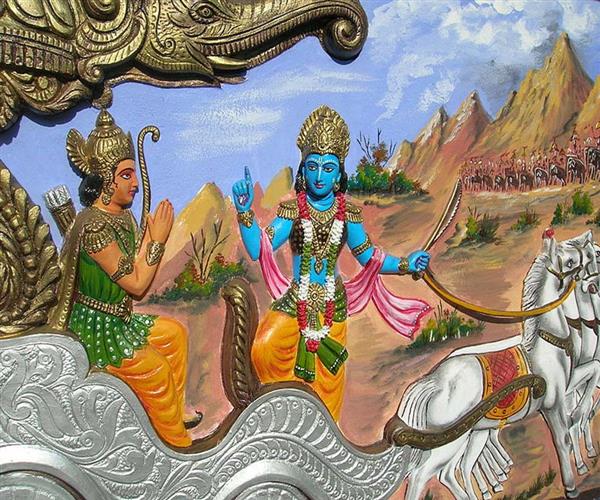The Rigveda, one of the oldest sacred texts in the world, comprises a collection of hymns that are organized into ten books, known as Mandalas. These hymns are composed in Vedic Sanskrit and are attributed to various ancient seers or rishis. The Rigveda encompasses a wide range of poetic expressions, reflecting the spiritual, mythological, philosophical, and ritualistic aspects of the Vedic culture. Among the hymns, several distinct types can be identified, each serving a unique purpose and invoking different deities or cosmic forces.

Mandala Hymns:
The Rigveda is organized into ten Mandalas, and each Mandala contains a collection of hymns attributed to different rishis. These Mandala hymns form the foundational structure of the Rigveda and cover a wide range of themes and subjects. They contain praises and invocations to various deities, descriptions of cosmic forces, mythical narratives, philosophical reflections, and ritual instructions. The Mandala hymns showcase the diversity and depth of Vedic poetry.
Devotional Hymns (Stotras):
Devotional hymns, also known as stotras, are expressions of deep reverence, praise, and devotion to specific deities. These hymns celebrate the divine qualities, powers, and manifestations of the gods and goddesses. Devotional hymns can be found throughout the Rigveda, dedicated to a variety of deities, including Indra (the king of gods), Agni (the fire god), Varuna (the god of cosmic order), and many others. These hymns express the spiritual connection between the worshippers and the deities, invoking their blessings and protection.
Invocatory Hymns (Suktas):
Invocatory hymns, known as suktas, are recited to invoke the presence and blessings of a particular deity or cosmic force. These hymns are chanted as a part of rituals and ceremonies to establish a connection between the worshippers and the divine. The suktas contain praises, appeals, and supplications to specific deities, seeking their aid and guidance. They emphasize the power and benevolence of the deities and serve as a means to establish a direct link with the divine realm.
Mythological Hymns:
The Rigveda contains hymns that depict various mythical narratives and legends. These hymns describe the exploits of gods, heroes, and mythical beings, portraying cosmic battles, creation stories, and tales of divine intervention. The mythological hymns provide insights into the rich mythological cosmology of the Vedic culture, weaving together elements of symbolism, allegory, and poetic imagination. They convey deeper philosophical and metaphysical meanings through the medium of captivating narratives.
Ritual Hymns (Yajnas):
Ritual hymns, also known as yajnas, are composed specifically for the performance of Vedic rituals and ceremonies. These hymns contain detailed instructions and invocations for the proper conduct of sacrificial rituals, including the selection of offerings, recitation of mantras, and the correct sequencing of actions. The ritual hymns emphasize the importance of precise pronunciation, rhythmic chanting, and adherence to ritual protocols to ensure the efficacy and success of the rituals. They serve as a guide for the Brahmin priests who perform the rituals and act as a bridge between the human and divine realms.